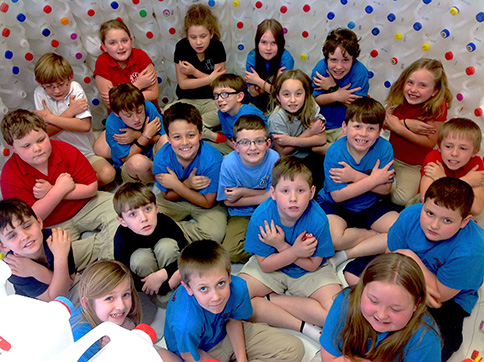
This is the third year Perdido Elementary third-graders have followed the Iditarod, or “last great race on earth.”
Mrs. Linda McCullough and Mrs. Laurie Myer have refined their approach and added new technology for the students each March as they research and follow their particular “musher.” The project is the brainchild of Mrs. McCullough.
It is a competitive event unlike any other in the world, according to Mrs. McCullough A race covering over1,000 miles of the roughest, most beautiful terrain, including jagged mountain ranges, frozen river, dense forest, desolate tundra and miles of windswept coast that the mushers and their dog teams must traverse. Add to that temperatures far below zero, winds that can cause a complete loss of visibility, the hazards of overflow, long hours of darkness and treacherous climbs and side hills, and you have the Iditarod: a race possible only in Alaska.
Students are in teams of 3, and select the “musher” they wish to follow before and throughout the race. They not only research their musher, but they also learn about the geography and terrain from Anchorage (in south central Alaska) to Nome (on the western Bering Sea coast). Members of the team are also responsible for finding out about how the dogs are trained, what they eat, and how they adapt to the changing weather conditions as well as keeping a daily log that shows where each team is throughout the race.
One of the most surprising mushers this year for the students was Seth Barnes, from Stockton, Alabama. The students also learned that mushers come from all over the world and all walks of life to compete.
This year’s winner was Mitch Seavey. The 57-year-old musher won the Iditarod Trail Sled Dog Race at 3:40 p.m., Tuesday, March 14, shattering the speed record by nearly eight hours to steal the title of fastest Iditarod musher ever from his much-younger son, Dallas. He remains the race’s oldest champion and has three wins in 13 years, his last in 2013 at age 53.
Some of the activities that the third graders have been involved in for the past few weeks are learning about the diphtheria outbreak in Nome, which is why the Iditarod takes place every year, as a remembrance. Students are required to study distance, time, and elapsed time as they monitor the progress of their musher. They also practice research skills, learn about the Northern Lights, discuss the weather and environment as they learn about the state of Alaska. This year, students were able to track their selected musher and follow them daily via GPS. As students follow their mushers, they increase their knowledge of map skills. Additional activities included Google slide show on mushers, STEM build an igloo with marshmallows, musher pendants, torn paper art musher dogs, daily journal writing, reading biographies on mushers, and conducting mock interviews with mushers.
A favorite activity in Mrs. Myer’s class was completing a STEM activity in which students had to determine both the problem and the goal for building an igloo.
They worked in small groups to create their teams’ igloo out of marshmallows (only 100), toothpicks and tongue depressors. When 30 minutes were up, the finished igloos were “wind tested” (with a hair dryer) to determine the winner.
